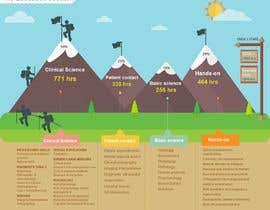Discover The Impressive Benefits Of Acupuncture As We Assess It Along With Traditional Discomfort Monitoring Strategies You Could Already Acknowledge. What Discoveries Could Await You?
Discover The Impressive Benefits Of Acupuncture As We Assess It Along With Traditional Discomfort Monitoring Strategies You Could Already Acknowledge. What Discoveries Could Await You?
Blog Article
Produced By-Braswell Oddershede
When you consider discomfort administration options, you may find yourself weighing the advantages and disadvantages of various strategies, consisting of acupuncture, over-the-counter medications, and physical therapy. While numerous methods offer relief, they typically include their own collection of challenges, like negative effects or extensive treatment times. Acupuncture stands apart for its special capacity to promote self-regulation with less dangers. However how does its effectiveness contrast to more conventional methods? The nuances of these strategies can considerably influence your choices, and exploring them better could cause surprising insights.
Overview of Discomfort Management Techniques
When it comes to managing discomfort, you have a selection of strategies available. These approaches can vary from conventional methods to more different therapies. Recognizing your alternatives is important in discovering what functions best for you.
One typical method is over the counter medications like ibuprofen or acetaminophen, which can offer quick alleviation for moderate to moderate pain. Prescription medicines, including opioids, could be necessary for more extreme pain, though they include dangers of dependence and side effects.
Physical therapy is an additional effective approach, concentrating on exercises and stretches to reinforce muscle mass and boost mobility. This method often helps in handling chronic pain conditions.
In addition, some individuals turn to more all natural choices, such as massage therapy, which can alleviate tension and enhance circulation.
Mind-body strategies, like mindfulness reflection or yoga exercise, aid you take care of discomfort by minimizing stress and anxiety and boosting your mental durability.
Last but not least, way of living changes, such as preserving a healthy diet regimen and routine exercise, can play a vital function in overall pain monitoring. Each method has its benefits and drawbacks, so it's vital to discover what suits your requirements and choices best.
Conveniences of Acupuncture
Acupuncture provides a distinct approach to pain monitoring that sticks out among different methods. By targeting specific points on your body, it stimulates the flow of energy, or "qi," promoting natural healing and lowering pain.
Among the greatest advantages is its minimal side effects. Unlike some medicines, which can result in dependence or undesirable wellness concerns, acupuncture is a holistic therapy that urges your body's self-regulation.
https://www.verywellhealth.com/lumbar-traction-offers-no-benefit-for-back-pain-3999170 'll likely locate that acupuncture sessions can help ease persistent pain, migraines, and also stress. Many people experience a feeling of leisure and well-being throughout and after therapy, which can improve overall quality of life.
And also, it's a versatile alternative; it can be utilized together with other therapies, making it a fantastic complement to your existing discomfort administration plan.
Another substantial benefit is that acupuncture can be tailored to your certain needs. https://professionalchiropracticc51739.snack-blog.com/32410019/chiropractic-therapy-an-all-natural-option-for-enhancing-joint-function will assess your condition and develop a customized therapy strategy, guaranteeing you get the treatment that finest supports your recuperation.
With its ancient roots and expanding approval in contemporary medication, acupuncture attracts attention as a compelling alternative for pain relief.
Comparing Effectiveness and Outcomes
Discomfort administration methods vary widely in their performance and results, making it critical to understand just how they stack up against one another. When thinking about alternatives like acupuncture, physical therapy, and medicine, you'll find unique distinctions in just how each method addresses discomfort.
Acupuncture, as an example, often gives alleviation for persistent pain conditions, with studies revealing considerable improvements suffering levels for many individuals.
On the other hand, medicines like opioids can properly manage sharp pain yet carry risks of dependence and side effects.
Physical therapy concentrates on recovery and may take longer to show results, which can be frustrating if you require immediate relief.
When examining these strategies, think about your particular pain type and your individual health and wellness goals. Some people find that a combination of techniques functions ideal for them.
For instance, you may benefit from acupuncture sessions together with physical treatment to maximize recovery.
Ultimately, understanding the efficiency and outcomes of each technique will aid you make educated choices concerning your pain monitoring technique, allowing you to select the technique that finest suits your requirements and way of living.
Final thought
In summary, acupuncture stands out as a useful alternative to conventional pain monitoring methods. It offers fast relief and cultivates self-regulation without the threats of dependence related to medicines. While physical treatment could require even more time for results, acupuncture can provide instant benefits, making it an appealing choice for those seeking remedy for persistent pain and stress and anxiety. By including acupuncture into your discomfort monitoring strategy, you can enhance your overall well-being and recover control over your wellness.
